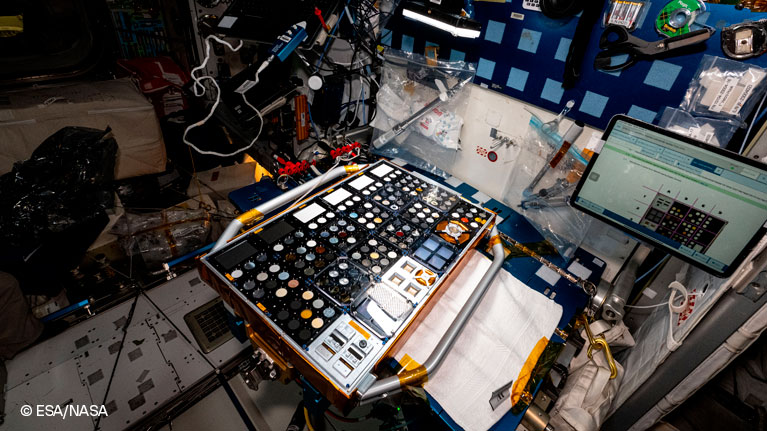Tekniker sends sample materials to the International Space Station for in-orbit testing
Tekniker sends sample materials to the International Space Station to run tests on the Bartolomeo platform installed aboard the Columbus module. The aim of this project, jointly led by ESA and CNES, is to evaluate advanced materials and has firmly positioned Tekniker amongst 15 European organisations selected in Euro Material Ageing 2020.

The Bartolomeo platform, installed aboard the European Columbus module of the International Space Station (ISS), now features a test bench for a new generation of materials with the potential of being used on space mission structures and mechanisms.
Two of the sample materials, have been designed and developed by the Basque technology centre Tekniker, a member of the Research and Technology Alliance (BRTA). These samples were sent last November and installed in December in the Euro Material Ageing 2020 experiment aboard the ISS, an experiment promoted by the European Space Agency (ESA) and the French National Centre for Space Studies (CNES).
The technology centre has supplied two samples, one with a Diamond Like Carbon (DLC) coating and another treated with Plasma Electro Oxidation (PEO).
Tekniker uses physical vapour deposition techniques (PVD) to develop DLC coatings and plasma-assisted chemical vapour deposition (PACVD) to improve the durability and performance of tribological components in space applications. DLC is characterised by its exceptional properties: low friction, high hardness and corrosion resistance to operate like a solid lubricant under vacuum conditions. This makes them highly suitable for use on mobile mechanisms in space missions.
Tekniker, moreover, uses a plasma electro oxidation technique (PEO) to deposit protective layers on light metals such as aluminum, aluminum-silicon and titanium. The resulting coating improves hardness, wear and corrosion resistance and adds a number of specific thermal features thanks to its black colour. Materials treated with PEO have a strong potential to be used in operations such as Artemis Mars Sample Return or aboard missions into deep space.
Studies will also address the durability of sample materials subjected to extreme conditions in terms of temperature, radiation, impacts produced by particles, vacuum or atomic oxygen together with samples from a total of 15 organisations selected by ESA and CNES.
Borja Coto, a researcher and the person in charge of Tekniker’s space sector, stresses that “it is not only a unique opportunity to test these materials directly in outer space but also a recognition of all the scientific work carried out at Tekniker as, of the 50 proposals received by ESA, only 15 of them were chosen based on their greater potential”.
One year exposure
ESA and CNES trust that the outcomes of this pilot experience will help to speed up the development of space materials in Europe and strengthen the continent’s role in what is a booming sector.
The material will be exposed to space conditions for one year and, once the mission ends, all samples will be returned to ESA’s European Centre for Research and Space Technology based in Noordwijk (Netherlands) to perform post-campaign analyses.
The technology centre’s know-how related to the space sector in areas such as tribology has been essential to produce these prototypes and ascertain whether it would be possible to apply these coatings in future exploration and investigation missions reaching out into other corners of the galaxy.
